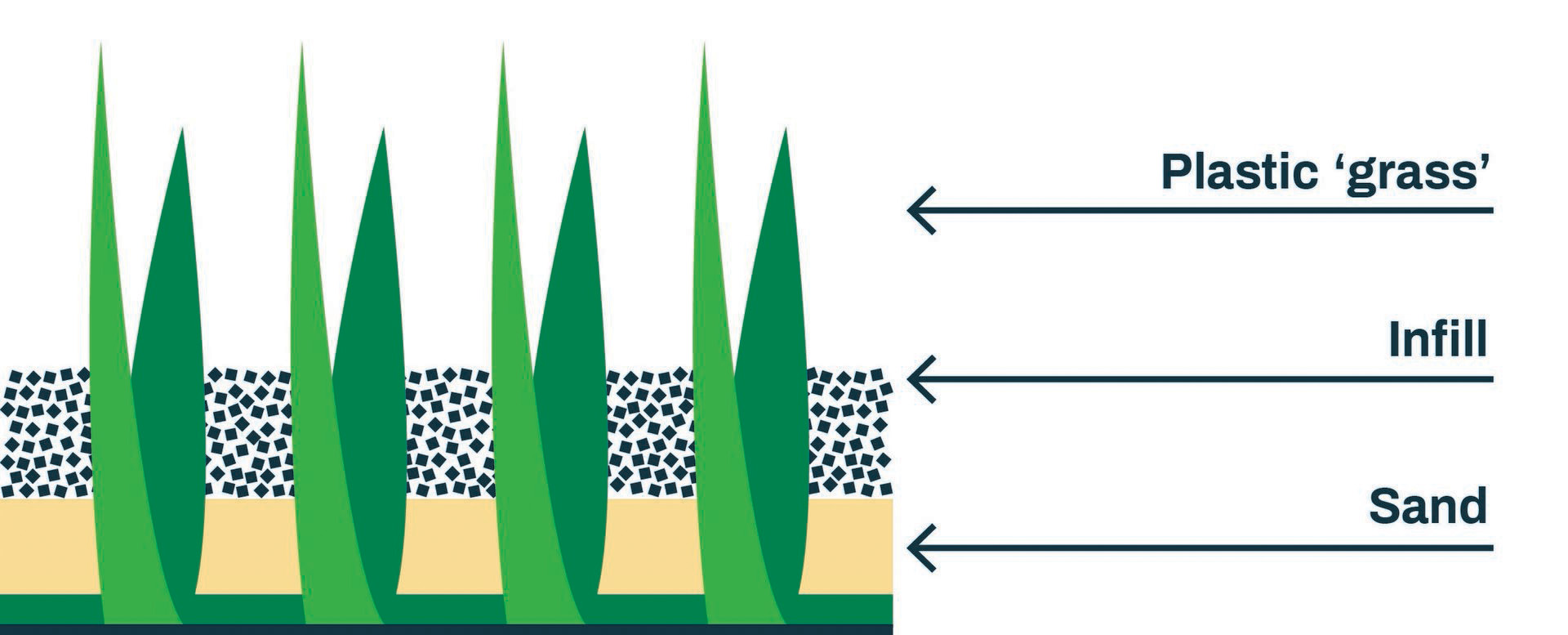Artificial (3G) pitches
Artificial (3G) pitches are increasingly popular, but few are aware that the little black bits on their surface are microplastics! This can escape into surrounding soil and waterways. These plastics are ground-up old tyres and contain harmful chemicals that leach out worsening their impact on ecosystems. Our Pitch In project explains what you can do to stop pollution from your local sports field.

THE
PROBLEM
Artificial pitches can be a big source of microplastic pollution!
Microplastic, usually rubber from old car tyres, is added to the top of the pitch to make it bouncy.
It gets into your kit, leaks off pitch edges, down drains and into the environment where it can harm ecosystems.
The
Solution
Artificial Pitches can be microplastic free! Alternative infills such as cork, or coconut husk can create a great playing surface.
Where microplastic is used, simple barriers and filters in drains can minimise pollution.
Whenever you play on a pitch, play your part by brushing off your boots and leave the microplastic on the pitch.
WHAT
CAN I DO
Sign our Pitch In Pledge to call for action to tackle microplastic loss from pitches.
Try out our games and activities to raise awareness with your sports teams.
Use our comprehensive best practice guidelines highlighting what you can do to stop microplastic pollution from your pitch.



